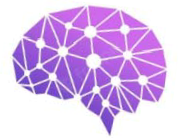
qEEG screening
Service code s9021
Short description
Usually, migraine results in the episodes of severe or moderate headache (which is often one-sided and pulsating) lasting between several hours to several days, accompanied by gastrointestinal upsets, such as nausea and vomiting. Visual aura (disturbance of vision) is the most common of the neurological events that usually precedes the headache. The somatosensory experience (a feeling of pins-and-needles or numbness) in the hand and arm as well as in the ipsilateral nose-mouth area or tongue is also common.
It is proposed that a phenomenon known as neuro-cortical spreading depolarization is responsible for the disorder. In cortical spreading of depolarization, electrical activity is depressed over an area of the cortex of the brain. This situation results in the release of inflammatory mediators leading to irritation of cranial nerve roots, especially the trigeminal nerve, which conveys the sensory information for the face and much of the head.
Scientific studies demonstrated that qEEG screening may help to objectively assess the brain’s electrical activity typical for a migraine.
Results
By performing this qEEG screening you will get the information on:
- whether you have a qEEG pattern typical for migraine and
- the potential extent of its severity.
Notes:
- The results of qEEG analysis are put in context of published scientific studies, the individual’s health history, complaints, symptoms and psychometric and other evaluations (if available).
- Present psychotropic medication use may affect the results.
To place a service order, use the following email:
References
- Marte Helene Bjørk, Lars J. Stovner, Morten Engstrøm, Marit Stjern, Knut Hagen, Trond Sand. Interictal quantitative EEG in migraine: a blinded controlled study. J Headache Pain 2009; 10: 331–339.
- Sand T. EEG in migraine: a review of the literature. Funct Neurol 1991; 6(1): 7-22.
- Sayyari E, Farzi M, Estakhrooeieh RR, Samiee F, Shamsollahi MB. Migraine Analysis Through EEG Signals with Classification Approach. IEEE, 2012.
- Tan HJ, Suganthi C, Dhachayani S, Rizal AM, Raymond AA. The Electroencephalogram Changes in Migraineurs. Med J Malaysia 2007; 62(1): 56-58.